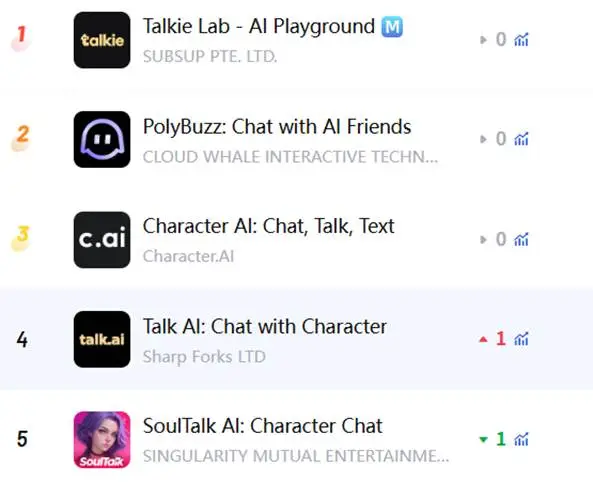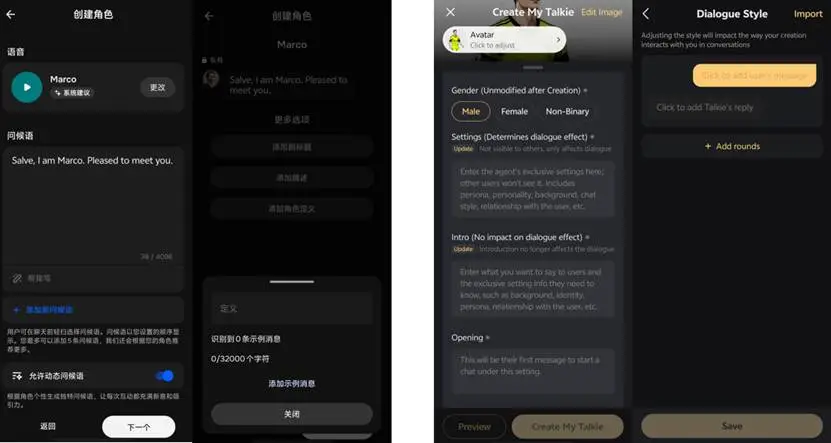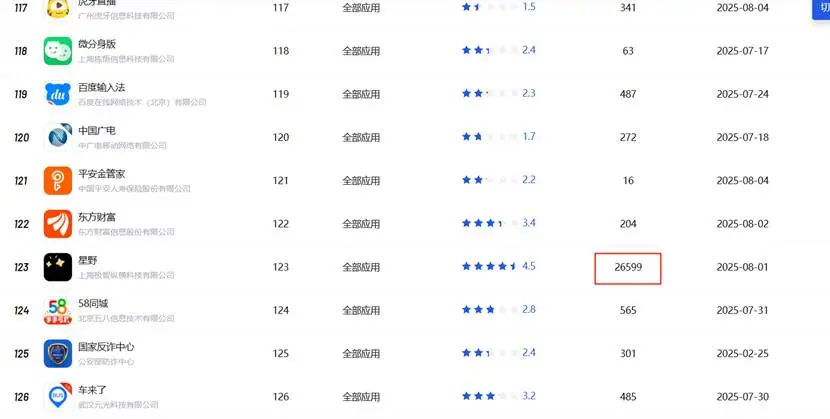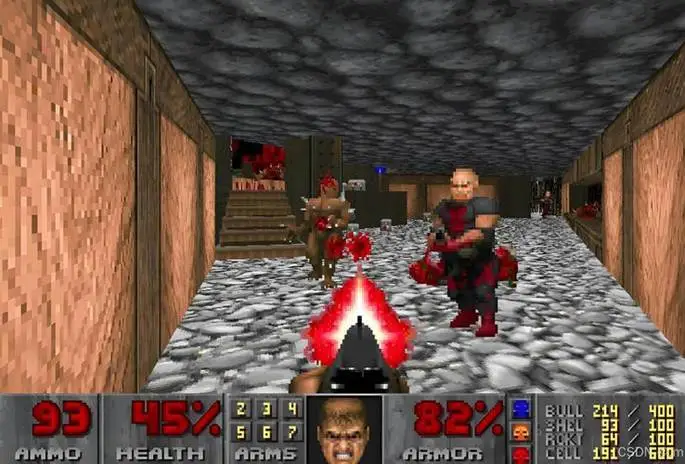Tencent and miHoYo's AI Venture Quietly Thriving Overseas
![]() 08/14 2025
08/14 2025
![]() 443
443

Image source: Talkie
In our exploration of the "AI internal cycle," we examined AI app ad spending in overseas regions during the first quarter of this year. Talkie, ranking fourth, left a lasting impression.
According to AppGrowing's "White Paper on Global Mobile Advertising Marketing Strategies," Talkie topped the list of ad spending in the AI app category during the first half of the year. Additionally, Diandian Data statistics from early August revealed that Talkie Lab once dominated the free chart for AI companion dialogue products, even surpassing Character AI, the category's leading product.
More significantly, this popular overseas app is developed by a Chinese company—Minimax, one of the "AI Six Dragons" whose investors include Tencent and miHoYo.

Image: Rankings of some AI companion apps, source: Diandian Data
Media reports indicate that Talkie's revenue last year approached $70 million. As Minimax has not provided official data and app monitoring platforms cannot fully capture all in-app purchases, we cannot accurately provide Talkie's revenue figures for this year.
However, considering the current trend in ad spending—where investment dollars are required and companies prioritize ROI—combined with last year's media disclosures, it is highly likely that Talkie will become another AI application with annual revenue exceeding $100 million.
Today, let's delve into Talkie:
● How did it stand out amidst fierce competition?
● What unique aspects does its commercialization path entail?
● What key insights can its success provide for the current surge in AI application development?
01 Each Generation Has Its Own Charm
Talkie is not Minimax's first AI companion app, with its inspiration likely stemming from Glow, Minimax's earliest AI social product. However, early Glow did not transcend the limitations of traditional chatbots, and its stylized image design lacked immersion as a vertical chat social software.
Two years ago, Talkie was officially launched, differentiating itself by adding language dialogue functionality. This feature, now commonplace, was ahead of its time two years ago, preceding Character.ai's Voice launch by six months, giving Talkie an initial comparative advantage.
At the end of 2023, Talkie remained in the top 10 of Google Play's free entertainment charts for a month in regions such as the United States, the United Kingdom, Canada, and Australia. In the first half of 2024, in terms of downloads alone, Talkie was able to compete on par with Character.ai, the industry leader.
Unlike traditional narratives, Talkie is not only an AI-native product but also grew organically in overseas markets. Seeing Talkie's success, Minimax then launched the domestic version of Talkie—Xingye.
Although Xingye has not yet broken out of the circle, it has become a leading vertical AI product in the domestic market, currently ranking second in the strange social software (stranger social) category in app stores, behind only Momo.
Last year, "Bad Review" wrote a dedicated article introducing Xingye, providing a detailed overview of Xingye's main gameplay. Today, we will focus on Talkie, as their main functions are essentially identical, so we will not delve too deeply into Xingye below.
Currently, the biggest difference between Talkie and Character, the leading overseas AI companion app, is that Talkie better understands what AI companion users need.
For instance, upon first opening the app, Character.ai presets the user's usage direction, allowing users to select interests and then specific purposes (such as personal growth, language learning, etc.), before pushing corresponding content. In contrast, Talkie is straightforward and does not preset usage purposes.
As an AI companion product, not presetting usage purposes is a clever approach, as all users' needs can essentially be addressed through dialogue. Presetting usage purposes may skew the dialogue style away from natural language expression, diminishing immersion.
It's akin to conversing with a teacher relative at a family gathering versus a work setting; while the content may be similar, the feeling is entirely different.
Another example is when presetting a character for dialogue. Character.ai only requires adding a greeting to generate the character, with subsequent options to describe the character's traits (not required). However, Talkie not only requires setting a greeting but also necessitates the author to complete the character's image, background, personality, social relationships, etc., which cannot be modified once generated. Special dialogue emotions can even be preset to complete the character's personality, as if a fully realized character has been created.

Image: Differences in character creation between Character.ai and Talkie (left: Character.ai, right: Talkie), source: product APP
For users, the sunk cost of creating a character on Talkie is significantly higher, and even for the same character, different personalities will emerge, thereby deepening the emotional connection between the user and the created character, and increasing the number of dialogue rounds and engagement.
The author tried having a conversation with Trump created by two different users, asking about Indian tariffs. The first Trump responded very formally, emphasizing American interests and basing decisions on data; the second Trump responded arrogantly, stating that you don't know anything, and concluding with a shout of "MAGA." Adding character backgrounds and personalities allows Talkie to create a scarce item in the emotional category—imperfect character cores, rather than relying on large language models to generate stereotypical perfect personas. It's akin to the characters in Qiong Yao's novels around the millennium, perhaps it is that imperfect love that resonates with readers.
From product character design to the issuance of value-added products (such as challenge tasks, character image cards), Talkie further deepens the emotional connection and increases user stickiness. For the domestic version Xingye, without increasing ad spending, the DAU from January to May this year remained almost unchanged, while competitors showed a significant decline. Through app stores, one can intuitively feel the user engagement, and at the same user scale level, Xingye's participation and comments are much higher than traditional software.

Image: VIVO app store all-app rankings, source: Vivo app store
The AI companionship track does indeed face compliance disputes and regulatory issues, making apps vulnerable when regulations tighten. However, for Talkie, which has been operating stably for two years (admittedly with some borderline content), its unique product design provides users with emotional value that surpasses that of competitors.
Regardless of the era, human emotional needs remain unchanged. Perhaps this is the Qiong Yao of the AI era.
02 Combining the Old with the New
Talkie's phased success cannot solely be attributed to its product design. In a highly competitive app market, without the protection of absolute barriers, continuous ad spending is necessary to maintain an industry position (evident from Talkie's substantial ad spending in the first half of this year).
In our view, the reason why Talkie, as a vertical app, is able to sustain such large-scale capital expenditure is inseparable from its commercialization design capabilities, which can be summarized in two aspects:
· Firstly, the commercialization route utilizes the most mature mechanisms
The so-called AI companion app is essentially a type of text game, so Talkie chose the most common monetization method in the Internet era: ads + in-app purchases + subscriptions.
Compared to most productive AI products today that monetize only through subscriptions, Talkie actually offers two additional optional monetization paths, with a significant income share. Currently, Talkie has numerous in-app purchase items, such as the need to pay corresponding star diamonds to continue after multiple dialogue rounds or to exceed character creation limits.
Simultaneously, subscription items align well with the core logic of text games, such as ad-free experiences, unlimited chat, autoplay for basic members, enhanced character context memory, multiple rounds of regenerated dialogue content, and increased image generation limits for premium members.
Most crucially, the addition of ads (possibly related to the number of dialogues, as the author encountered few ads) likely significantly increased Talkie's revenue cap. According to Diandian Data, Talkie's current in-app purchase amount is not high, so if last year's $70 million revenue is accurate, ads must account for a substantial portion.
Last year, White Whale go to sea conducted a comprehensive analysis of Talkie's commercialization, mentioning Talkie's bold subscription setting:
Most overseas internet or AI products either do not offer free trial services or directly provide users with a 3-day or 7-day free subscription plan. In contrast, Talkie requires users to watch 5 long ads to unlock a subscription plan that includes a 7-day free trial. This may stem from Talkie's confidence in its product and the principle of ensuring every DAU contributes to revenue.
The three monetization paths combine traditional apps (ads) + traditional games (in-app purchases) + traditional productivity tools (subscriptions), each a mature commercialization route in the mobile Internet era.
Utilizing all the most mature mechanisms available to make money, maintaining a positive ROI, and continuously investing to sustain traffic levels may be a model that future AI applications can learn from.
· Secondly, the design of value-added services caters to consumer generations
The author personally believes that Talkie's design of value-added products likely draws inspiration from the outstanding products and mechanisms of the fifth consumer generation.
For example, the character image gacha mechanism is similar to Genshin Impact's daily 648 pulls.
Another example is the tiered classification of user-created IPs into the gacha pool, requiring creators to collect character images themselves (commonly known as raising pets), akin to the developer designer platform, blind box drawing Bubble Mart.
Yet another example is the digitization of card assets, similar to web3.0 digital collectibles and Steam.

Image: Some character image stores on Talkie, source: Talkie APP
Pleasing oneself, instant gratification at an accelerated pace, and other logics aligned with the narrative of the fifth consumer era can all be found in Talkie's corresponding value-added products. These are all logics validated by the current young consumer market, and reuse is definitely correct.
In summary, we believe that Talkie's remarkable success at the commercialization level is essentially due to shedding the "Confucian scholar" robe. Minimax did not adhere to the notion that by utilizing AI technology and launching AI-native products, it must only target headline stars and engage in subscription services that benchmark token computing power. Instead, it took a practical and mature monetization path.

Making money, doing business, is not shameful.
03 Entertainment Games: The Key to the New World
At this juncture, we have roughly outlined Talkie's product design logic and commercialization path. If we elevate the narrative logic to the macro level of AI application development, whether a purely entertainment-oriented product is worth studying, discussing, and learning from is debatable.
The author's personal view is that technology does not distinguish between nobility and humility, and applications that can drive AI technology to the grassroots and the broadest user base are valuable.
As the most instinctive human need, entertainment can fully drive technology promotion and development through human nature. For example, in the 1990s, Microsoft promoted graphical user interfaces by including games like Minesweeper and Solitaire in the system, helping users understand mouse interaction logic.
The same applies to keyboard interaction. How many people, like the author, practiced blind keyboard typing skills by secretly playing the police-catch-the-thief game in Jinshan Typing Master in the school computer room?
Recently, Gabe Newell, the founder of Valve, gave his first interview after retirement, discussing his 13 years of experience at Microsoft and mentioning Microsoft's initial resistance to PC games. Gabe felt that the functionality of PC devices was not being fully utilized, and PC games could definitely drive the distribution of Windows projects, as there were more Doom players than Windows users at the time.

The success of Doom being ported to PCs is widely acknowledged, as it not only spurred the adoption of new systems but also fueled advancements in 3D graphics technology. More broadly, even the current AI industry, heavily reliant on NVIDIA, has benefited from these developments.
Therefore, despite Talkie being solely an AI application tailored for entertainment and gaming, its rapid growth should not be dismissed as insignificant. Should an analogous AI product, also focused on entertainment, transcend its niche and reach a broader audience, it might indeed resolve the prevailing issue of low AI adoption.
An excerpt from a speech titled "Everyone's AI," delivered by Yan Junjie, the founder of Minimax, highlights: "The utilization of AI has transcended its initial design and expectations, giving rise to numerous unimaginable application scenarios."
Given the ever-evolving nature of application scenarios, why should we dismiss an AI-native application that has achieved remarkable success overseas, merely because it leans towards entertainment and gaming?
The product that ushers in a new era might not be Talkie, Xingye, or Character AI, but it will undoubtedly be one that seamlessly integrates into the daily work and leisure of ordinary users, enhancing productivity, igniting their interests, and motivating them to explore and learn.








